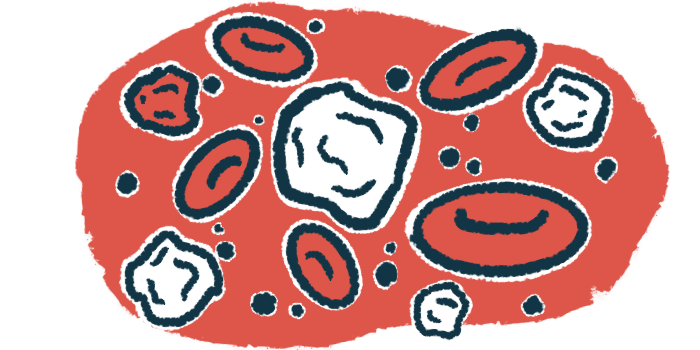Experts largely agree on which AAV symptoms are granuloma-driven
Study: Presence of immune cell clusters didn't alter their initial therapy choices

Physicians experienced in treating ANCA-associated vasculitis (AAV) generally agree on which disease manifestations are driven by granulomas, or clusters of immune cells, according to a survey study.
Such manifestations included masses on the lungs or behind the eye socket, narrowing of the airways below the vocal cords, and involvement of the sinuses, the air-filled cavities in the skull surrounding the nose.
While experts also generally agreed that granuloma-induced inflammation alters the disease’s natural history and treatment, the presence of granulomas did not change their initial therapy choices in severe AAV.
“We have generated a consensus list of granulomatous manifestations of AAV,” which “can be used to guide future research pairing histology [tissue analysis] and clinical findings,” the researchers wrote.
Survey details were described in the study, “Clinician views concerning the prevalence and impact of granulomas on the diagnosis, management, and outcomes of ANCA-associated vasculitis,” which was published in the journal Rheumatology.
Granulomas drive blood vessel inflammation in two main AAV types
AAV is a group of autoimmune diseases characterized by inflammation and damage to small blood vessels, most often caused by self-reactive antibodies called ANCAs.
Granulomas, or clusters of immune cells, are known to drive blood vessel inflammation in two main types of AAV: granulomatosis with polyangiitis (GPA) and eosinophilic granulomatosis with polyangiitis. Granulomas are typically absent in the third main type of AAV, known as microscopic polyangiitis (MPA).
However, it remains unclear whether clinicians agree on which manifestations of AAV are associated with granulomas, or whether these manifestations affect diagnosis, treatment decisions, and patient outcomes.
“Better consensus is needed to define granulomatous manifestations of AAV and how they impact the disease,” wrote a team of researchers who addressed this gap by surveying 142 physicians in 35 countries who care for individuals with AAV.
Physicians agreed granulomas are associated with increased relapse risk
The primary survey contained 29 items, structured as statements about physicians’ opinions regarding granulomas. Opinions were gauged on a seven-point Likert scale, from one (strongly disagree) to four (neither agree nor disagree), to seven (strongly agree).
When asked whether granulomas were associated with an increased risk of relapse, the median Likert response from physicians was six (agree). The median was one (strongly disagree) when asked whether granulomas were necessary for diagnosing MPA. The most variable response across physicians was whether symptomatic granulomas were required for a GPA diagnosis.
There was a median response of five (somewhat agree) on several statements, including that granuloma-related manifestations had a differential response to therapy, required higher doses of glucocorticoids (anti-inflammatory and immunosuppressive medications), and were associated with more permanent damage.
When experts were asked if each of 36 AAV manifestations was caused by granulomas (on a scale from zero to 100), four items were considered strongly related to granulomas, with at least 75% of respondents saying that each of those manifestation was caused by granulomas.
“The manifestation believed to be most frequently caused by granulomas was pulmonary nodules [lung masses] (median 88% [of respondents]),” the researchers wrote. The others included masses behind the eye socket (retro-orbital masses), sinus involvement, and airway narrowing below the vocal cords (subglottic stenosis).
AAV manifestations that were frequently considered to be caused by granulomas (median between 50% and 74% of respondents) included brain lesions, tear duct involvement, salivary gland inflammation, and nasal crusting. Those infrequently caused by granulomas (median between 25% and 49%) included spinal cord lesions, oral ulcers, and cardiomyopathy (heart muscle damage).
Our survey results suggest that physicians who treat AAV generally agree which manifestations are or are not caused by granulomas and that individuals with granulomatous manifestations of AAV differ clinically from those without them in both treatment and disease outcomes.
AAV manifestations not caused by granulomas (less than 25% of respondents) included stroke, skin ulcers, and lung bleeding, as well as arthritis (joint inflammation and pain), which was considered the least likely, with a median of 3.5% of respondents pointing to a cause-and-effect association.
Regarding four scenarios of severe AAV patients in which the most severe manifestation was linked to granulomas, the most favored treatment regimen to achieve remission in nodule-related lung disease, hearing loss, and inflammation of the outermost membrane covering the brain and spinal cord was glucocorticoids plus rituximab (63.6% to 72.7%). For retro orbital masses, glucocorticoid therapy alone was the most commonly favored regimen (49.2%), followed by rituximab (35.6%).
Respondents generally felt their treatment choices aligned with prior practice, local norms, disease biology, and available evidence, with a median Likert score of five (somewhat agree).
There was some disagreement about changing therapies when certain new manifestations appeared, including bleeding into the lungs’ air sacs or damage to at least two separate peripheral nerves, or those outside the brain and spinal cord.
In an adjusted statistical analysis, respondents’ beliefs about the frequency of granulomas causing AAV manifestations were not associated with their likelihood of changing treatment. Still, respondents with more years in practice were significantly less likely to agree that they would change initial therapy.
“Our survey results suggest that physicians who treat AAV generally agree which manifestations are or are not caused by granulomas and that individuals with granulomatous manifestations of AAV differ clinically from those without them in both treatment and disease outcomes,” the researchers wrote. “There is, however, less consensus on how this changes therapeutic decision-making.”








